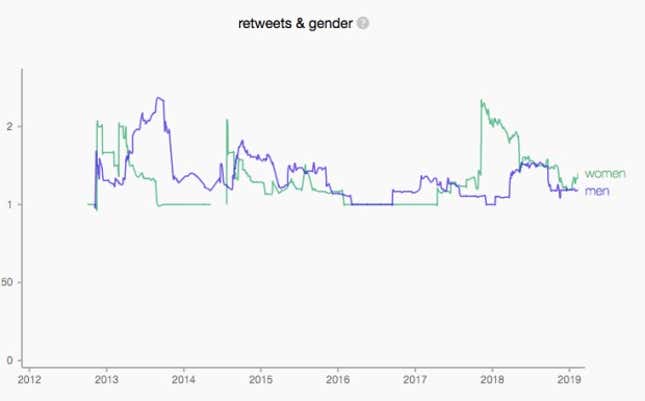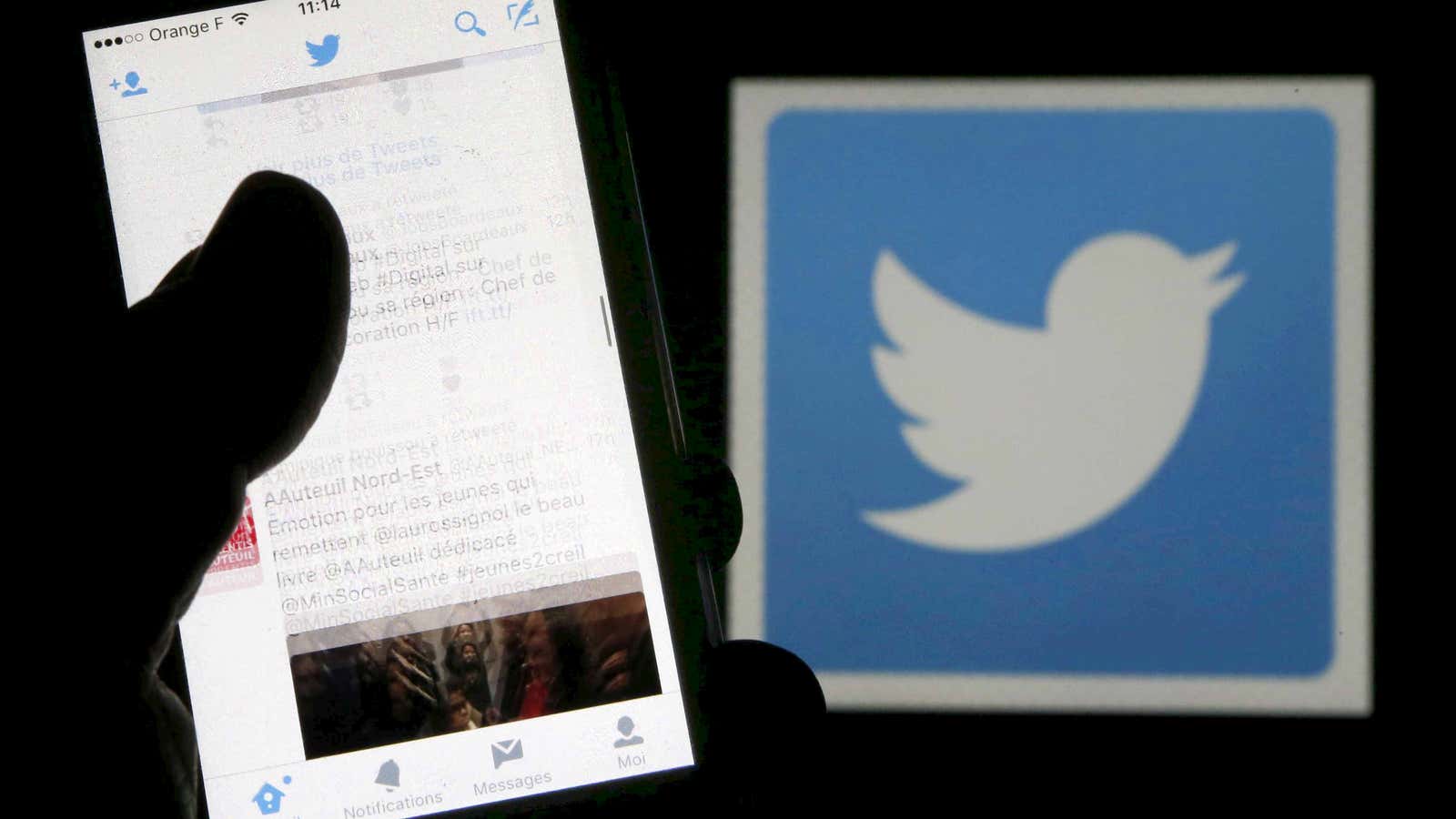Conversations in patriarchal societies tend to amplify men’s voices more than women’s, and Twitter is no exception to this rule. A study last year found male US political reporters retweet other men three times more than they do their female colleagues, while Harvard Business School researchers in 2009 found men in general were almost twice as likely to follow another man as a woman.
Many Twitter users may not be intentionally ignoring women’s input, but these small biases add up. And there’s now a tool that shows whether you retweet and respond to men more than women on Twitter.
The website, built by open-data researcher Bastian Greshake Tzovaras, allows people to upload their Twitter archives and then analyzes the results. It can be a little buggy (several Quartz reporters never got an email saying their results were ready, and instead just found their graphs on the homepage of the website), but it works. On Twitter, Tzovaras said more than 300 people have uploaded their Twitter archives, and has also noticed that his own interactions have improved since he started paying attention to his gender balance.
I was worried my own data would show a bias. Though I consider myself a strident feminist, I report on the male-dominated fields of philosophy and brain sciences, and hadn’t made a conscious effort to ensure equality in my tweets. But the graphs show that I reply to men and women at very similar rates and, though I’ve had periods where I retweet and reply to women more than men, there wasn’t a major difference over time. (In early 2013 I retweeted more men, and in early 2018 I retweeted far more women, but the trends seem fairly even overall. Meanwhile, a spike in replies to women in 2016 can be explained by one prolonged Twitter conversation.)


I asked one female colleague and two male colleagues to analyze their Tweets too and, among our very small sample size, there wasn’t a noticeable difference in how the men versus the women interacted on Twitter. But it was interesting to spot our individual trends. One was surprised to see she both replied and retweeted to men more than women; another found he’d had a year around 2016-2017 of retweeting far more men, followed by a year of retweeting far more women; and the third saw he retweeted more women than men but replied to more men than women.
The colleague who retweeted more women but replied to more men said he was conscious of trying to amplify women’s voices, but was struck by his replies data, which suggest he has more relationships with men. “I can’t decide if that’s a problem or luck,” he said, noting his field is male-dominated, but that he could develop more communication with women. Of course, there are several factors that could contribute to a gender imbalance—perhaps you have more male friends, or colleagues, or just retweet and reply to every thing that former president Obama says. The data simply offer a chance to reconsider those interactions, and question whether there’s anything you can do differently.
It can take work to ensure that men and women are treated equally in even the smallest interactions. In an article last year, Atlantic science reporter Ed Yong explained how he analyzed his own articles and found he quoted men far more than women, and then spent two years trying to fix that imbalance. Tzovaras’s tool makes it easy for anyone who cares to see the gender balance of their Twitter interactions.
Of course, Twitter does not necessarily reflect everyday interactions, and one person’s replies and retweets can amount to a fairly small data set. But the cold hard data offer a clearer picture of any aggregate imbalances that could be overlooked day to day, and is the first step towards a more considered approach to Twitter. Even something as seemingly small as retweet can, over millions of users and interactions, build into something more significant.
